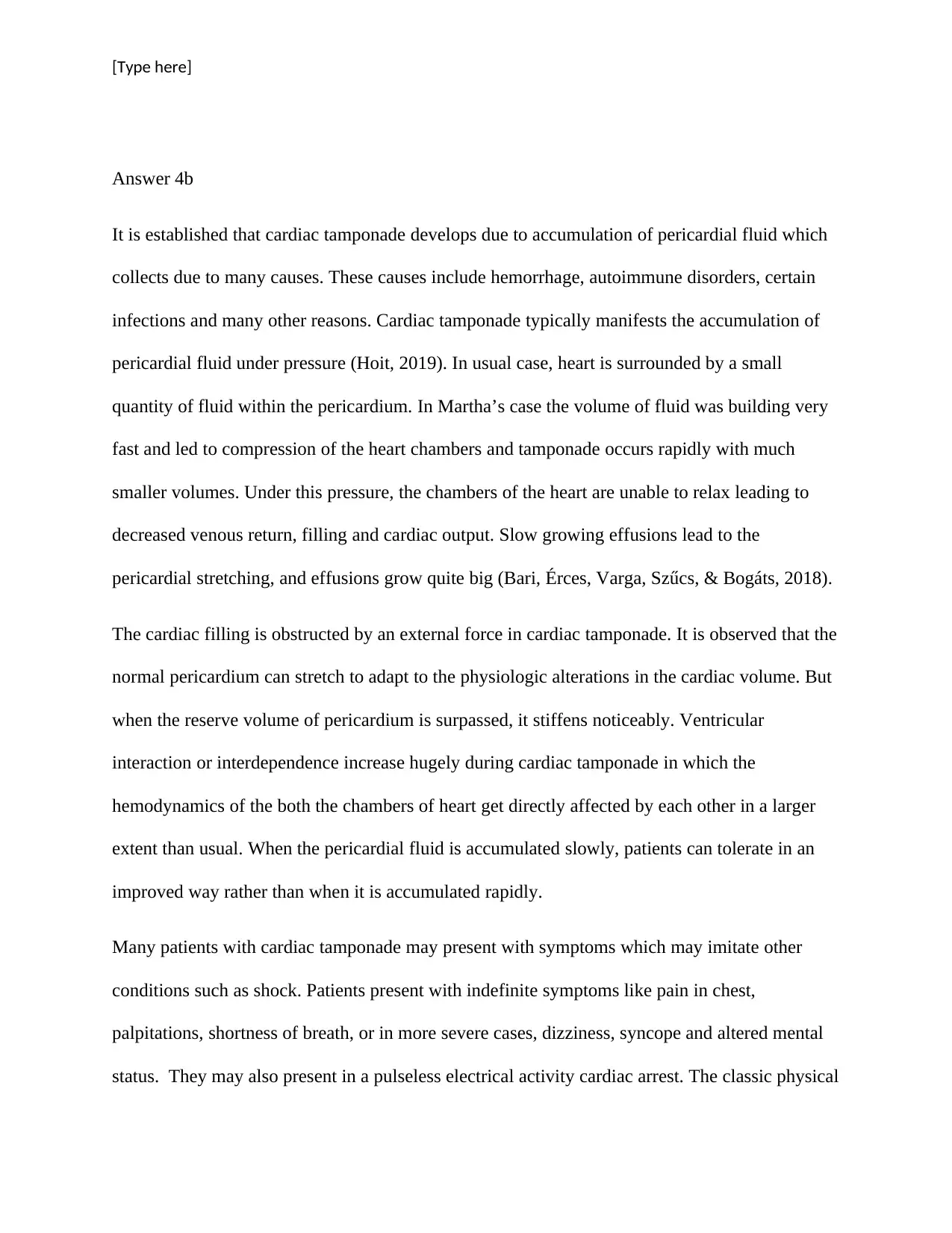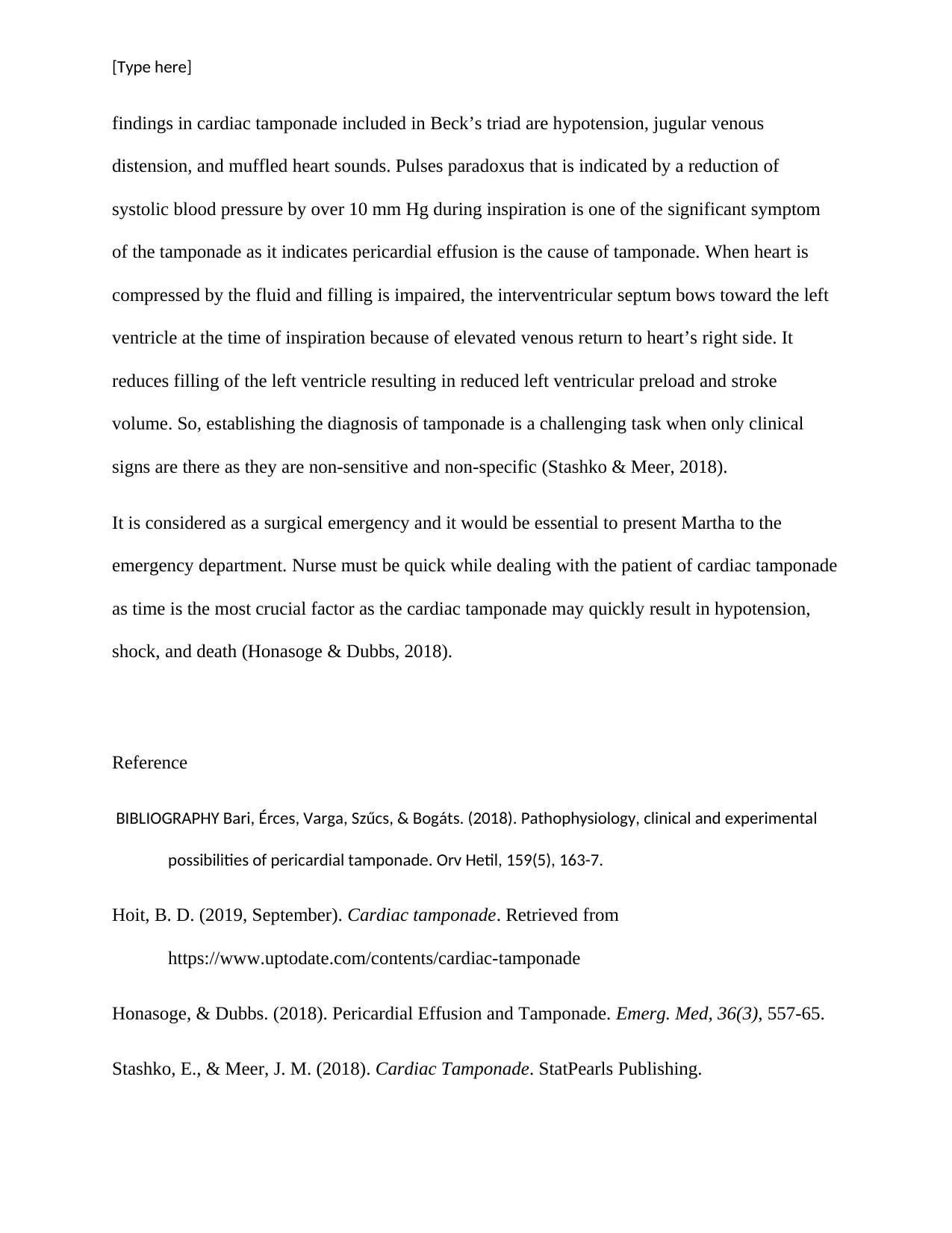Cardiac Tamponade: Comprehensive Analysis of a Patient Case Study
VerifiedAdded on 2022/09/27
|3
|629
|24
Homework Assignment
AI Summary
This assignment analyzes a case study of a 40-year-old female, Martha Myles, who presented to the emergency department following a high-speed car crash. The analysis focuses on the development of cardiac tamponade, a critical condition caused by the accumulation of pericardial fluid. The assignment describes the pathophysiology, causes, and clinical manifestations of cardiac tamponade, including symptoms like chest pain, shortness of breath, and the classic Beck’s triad. It emphasizes the importance of rapid diagnosis and intervention due to the potential for rapid deterioration, shock, and death. The document also highlights the nursing considerations and the urgency required in managing patients with this condition. The case study underscores the challenges in diagnosing tamponade and the need for prompt treatment in an emergency setting.
1 out of 3







![[object Object]](/_next/static/media/star-bottom.7253800d.svg)